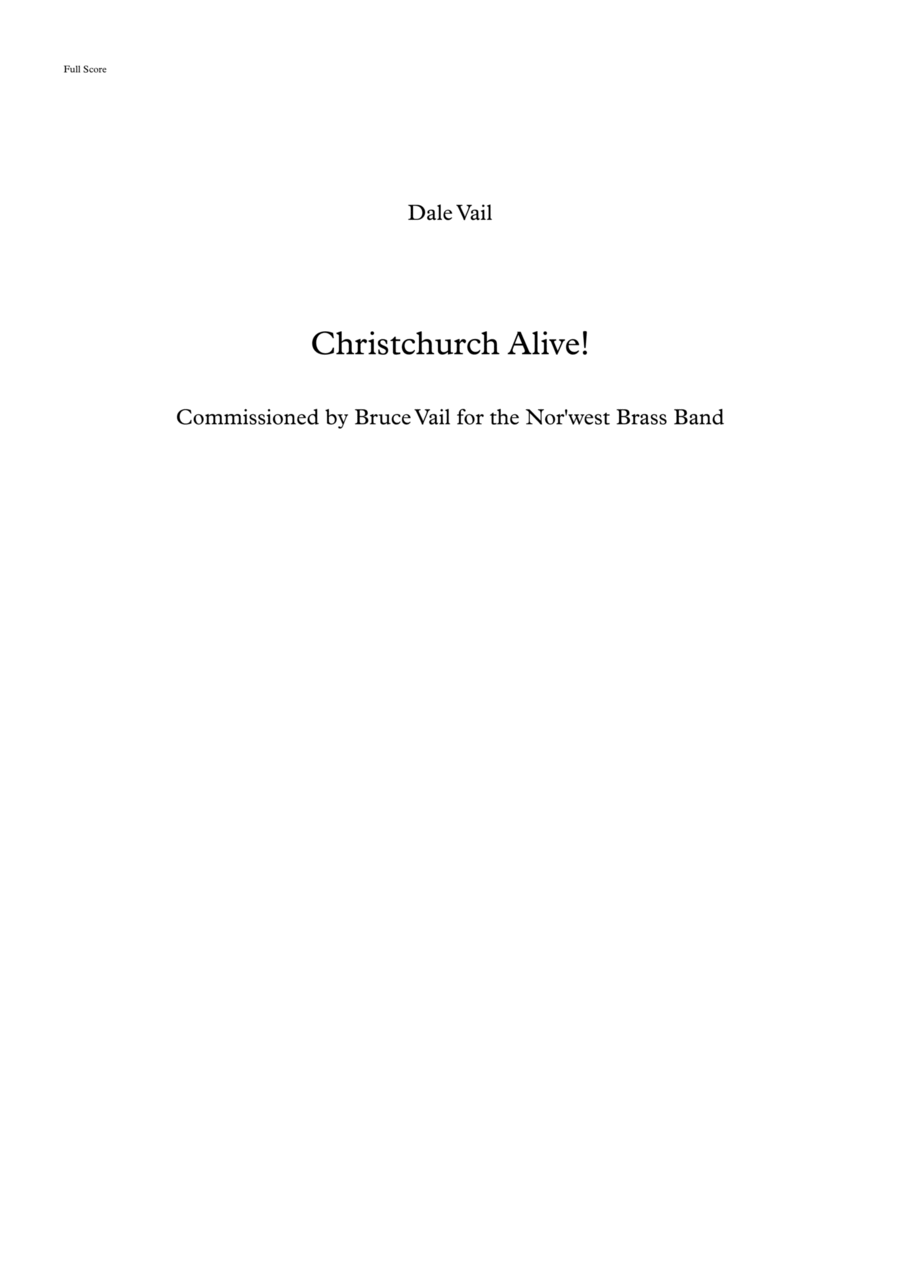Mixed Percussion B-Flat Tuba,B-Flat trombone,Baritone Horn TC/Euphonium,Bass Trombone,E-Flat Cornet,E-Flat Tenor Horn,E-Flat Tuba TC,Flugelhorn,Percussion 1,Percussion 2,Tenor Trombone - Level 3 - Digital Download SKU: A0.1308595 Composed by Dale Vail. Classical,Contest,Festival,Jazz. Brass Band. 107 pages. Dale Vail #897836. Published by Dale Vail (A0.1308595). Christchurch Alive! - Brass Band Major WorkPlaying level : Suitable for bands of all levelsParts for British Brass Band, and transposed options for Bass clef Trombone/Euphonium/Baritones/Tubas and Horns in F.Christchurch Alive! was written for the Nor'west Brass Band in 2017 by Dale Vail as the own choice work for their first New Zealand National Brass Band Contest in 2018.Christchurch Alive! is a testimony to the spirit of the Christchurch Community, and their resilience to the life changing earthquakes of 2010 and 2011. The piece is built around the harmonic circle of fifths. The circle of fifths is famous for being a common harmonic pattern in both baroque and classical music, and jazz and modern music. Most influentially used by Arcangelo Corelli, the pattern appears commonly in the Johann Sebastian Bach's music, and the works of Antonio Lucio Vivaldi.In the modern age, it is most famously heard in Joseph Kosma's Autumn Leaves. Dale's piece takes the two sides of this famous progression, and links them into one seamless piece of music, symbolising the union of two eras making something new, much like pre-earthquake culture, and new post-earthquake culture, joining together to create a new community.The work opens with a traditional style melody, utilising a modern minor 7th tonality. Tubular bells sound 5 times, a clock tower striking 5am marking the first hour after the first earthquake. The band explodes into a New Orleans style street band theme, showing the nightlife and central city vibrancy that still exists amongst the repairs. This swaps to a Vivaldi inspired melody, using the same circle of 5ths progression, a blend of two different times, old and new buildings forming one city. A solo voice from offstage begins a cadenza, echos of a busker in the old arts centre markets, which brings one intoA nostalgic melody from the flugel. A reflection on what used to be. The circle of fifths becomes a I - V progression, stuck on a continuous loop, illustrating a longing to remember, and to restore what was. The circle begins to move forward again with a solo trombone taking the stage, a reflection on the late night jam sessions from the Christchurch Jazz School on Poplar lane. A Sibelius inspired melody reminds that whilst the past is remembered, it cannot be revisited. The flugel melody is re-harmonized, remembering what made the old Christchurch great, and taking that with us to the new Christchurch. All the themes are revisited and brought together in a vibrant ending, a hybrid of different communities, restored and new landmarks, and a resolve to make the future their own.The city is thriving and more alive than ever.
